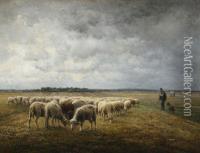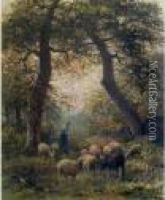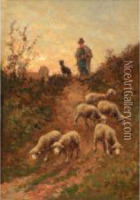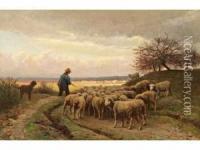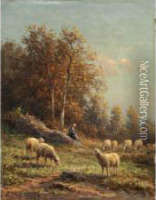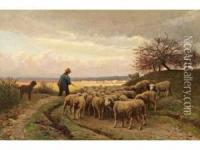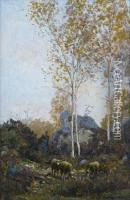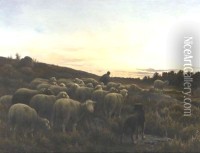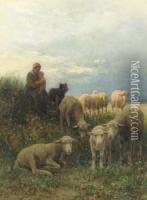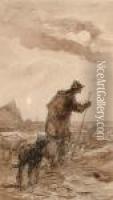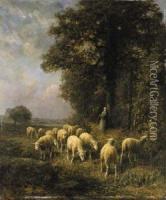Jean-Ferdinand Chaigneau Paintings
Jean-Ferdinand Chaigneau was a French landscape painter associated with the Barbizon School, a group of artists working in the village of Barbizon who embraced naturalism and plein air painting. He was born on February 12, 1830, in Bordeaux, France. Chaigneau was initially trained by his father, who was also a painter, before moving to Paris to continue his artistic education.
In Paris, Chaigneau became a student of Charles Jacque, a prominent member of the Barbizon School known for his pastoral and animal scenes. Influenced by Jacque and other Barbizon artists like Jean-François Millet and Théodore Rousseau, Chaigneau’s work often depicted rural French landscapes with a focus on the authenticity of peasant life and the beauty of nature in its untouched state.
Throughout his career, Chaigneau exhibited his work at the Paris Salon, an official art exhibition of the Académie des Beaux-Arts in Paris. His paintings were recognized for their delicate treatment of light and atmosphere, which he captured through his skilled brushwork and nuanced color palette. Unlike some of his contemporaries who depicted dramatic scenes of nature, Chaigneau’s landscapes were often quiet and idyllic, reflecting a sense of harmony between humans and their environment.
Chaigneau's contribution to the Barbizon School was significant, though he did not achieve the same level of fame as some of his peers. His works are, however, appreciated by connoisseurs and collectors of Barbizon paintings for their lyrical qualities and his dedication to plein air painting traditions. The artist died on November 12, 1906, in Paris, leaving behind a body of work that continues to be studied and admired for its contribution to the development of landscape painting in the 19th century.

